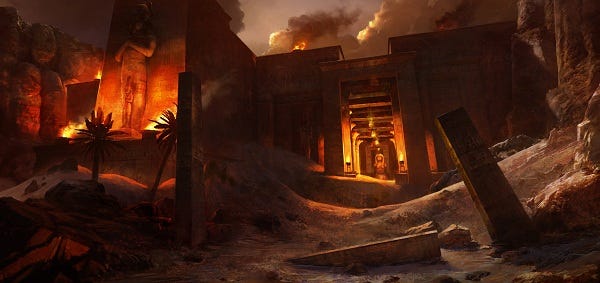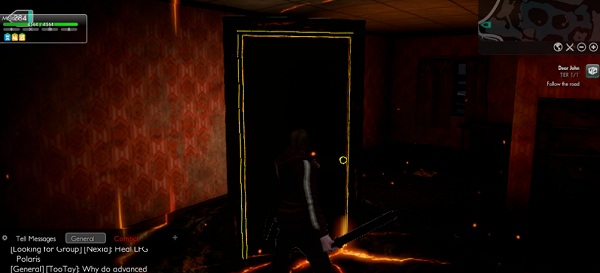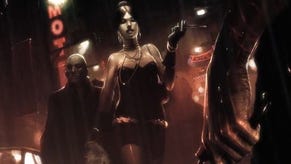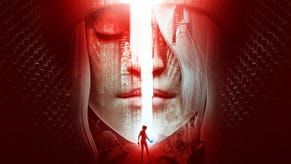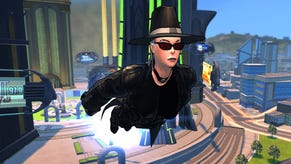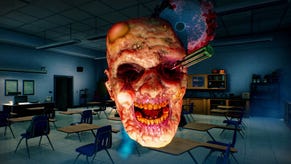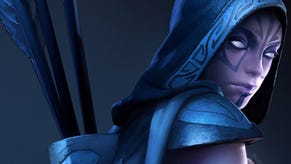Wot I Think: The Secret World
Secret's out...
I’ve been exploring The Secret World for a good while now, so even though Funcom have only just released it into our own unenigmatic land, I’m ready to tell you wot I think. Of course, given the nature of the game, I’ll be continuing to play, revisiting and reporting back, but I’ve already seen a great deal of the content and so I’m going to do this the only way I know how. Words, ordered into sentences, conveying ideas.
The Secret World is an excellent, intelligent and literate pop song with a thudding, repetitive ear-worm of a chorus. It's also an MMO designed by Funcom but indulge me.
When I first saw footage from the game I was, if not quite dismayed, somewhat disappointed. All the talk of a modern, recognisable world, the emphasis on engagement and storytelling rather than repetitious combat, all of that seemed to vanish the moment I saw a gang of avatars circling a giant monster, firing energy beams from shotguns, casting buffs on their friends.
At best, I figured, there would be exposure to all the mysteries and dialogue sequences I’d hoped for, but there would be another game alongside that exploration and investigation, and it looked like a game I had very little interest in playing. The Secret World would be a wide-ranging and intriguing adventure punctuated with button-punching combat and awkward stitching together of complex skills.
That would be the easy version. Two games Frankensteined together; one indebted to traditional MMO mechanics, the other indebted to Ragnar Tornquist’s creative vision. The easy version, as is often the case, is wrong.
The Secret World isn’t two games uneasily co-existing, it isn’t just a story interrupted by the need for mechanical progression, the actual experience is more like verses and choruses, lyrics and melodies. Let’s talk about the verses first, the words and the meaning, the variations on a theme.
It’s quite the epic, this song, thick with references, playfully allusive and borrowing from history and myth alike. The most important thing about The Secret World is that anything is possible and everything is real, which leads to a hugely impressive variety in terms of opponents to face and people to meet. For the first few hours of play you’re talking to the beleaguered and haunted townsfolk of the blighted Lovecraftian town of Kingsmouth, dealing death to zombies and creatures from the depths. Then you find a doorway to another realm, a shimmering gateway to the past, a reason to walk with and talk to the dead. Hours later you’re in a lost Egyptian valley, communing with things that may have been gods, crushing death cults, quipping with corpses.
Your character doesn’t have a voice, which leads to some odd mannerisms during the often long conversations he/she is party to. At times I was convinced my Irish Illuminati renegade, Patrick O’Patrick, didn’t actually understand anything that was being said to him. He just half-nodded, tried to look interested and then ran away, crowds of monsters following him as he went. That’s fine, in the end, because he’s not the most important player on this stage, not by a long shot.
The conversations and the characters are almost universally excellent, the quality there, as with everything else, thankfully maintained beyond the early areas. In fact, I reckon some of the strongest moments are later, when the individual threads start to intertwine and the scale of the catastrophe becomes apparent. It seems big, always, but, blimey, it’s massive. On the way there, it can be distracting that such an epic adventure has a meaningless mob bunny-hopping through it, particularly when the atmosphere is at its most bleak and unforgiving. The world, our world, is at breaking point and while there is a great deal of humour and humanity, there’s sorrow and doom in almost every individual tale.
The game’s greatest triumph may well be the world itself, which is recognisable despite the beasties, magic and dimensional rifts that are tearing it apart. Small touches remind of the world outside the screen: the detailed menus in a café that will never serve another customer, the fact that almost every individual you meet not only has a place but a purpose, even if it’s just to survive. The story isn’t told through the scattered lore icons - they are far weirder, brilliantly so, than the encyclopaedia entries you might expect – but through the tales of the people you meet. Whether a magician hunting for a powerful artefact or a biker who spends his time making explosives, not just to fight back, but to protect the deputy sheriff, a man he will grudgingly admit he has fallen for.
It’s a mark of the quality and breadth of the human cast that there’s room for that relationship to have a voice, not loud and insistent but simply present, in among the necromancers, the thrillseekers and the dangerously deranged. At times the monologues are natural, believable, but there’s a Whedonesque or even Tornquistian current which makes these seem like witty, often hyper-literate approximations of people. They’re an entertaining bunch to spend time with though and anyone who fell in love with The Longest Journey will most likely be smitten by the abundance of words and wordplay.
That brings me to the best bits; the investigation missions. You’ve probably heard about them already – quests that rely on knowledge, observation and attention to detail rather than abstract conjuring abilities. Along with the contemporary setting, they are the heart of the game and the addition that allows it to stake its claim as a truly fascinating experience, an adventure-MMO hybrid.
Most work brilliantly, although when external knowledge of the real world is required the in-game browser already leads to forum discussions of the solutions in many instances. You can just skip past those like you would any spoiler though and figure things out for yourself, discussing with a friend, solving things together and feeling as smart as a whip. There are riddles to solve, puzzles to overcome and mysteries to uncover. That’s all part of life in The Secret World.
But what about death, causing it and suffering from it? That’s the chorus. All those verses, distinct and meaningful, are broken up by a sound you’ll hear again and again, and have probably already heard so many times before. It’s the rattle of your number keys, the clicking of your mouse, the swish, biff, roar, stab, stomp, shazam of MMO combat.
Despite the lack of levels and classes, at first it’s hard to see how this melody differs from any other. The rhythm is familiar, the moves almost rote by now, and at first I thought the fighting would be something to endure, a perhaps necessary interruption before something exciting could happen again, before the world and the game could move forward. Although I admired the enormous skill wheel and the ability to change my character’s proficiencies at will, I was also intimidated by its mathematical descriptions and it took a while before I was convinced it offered anything new.
It does though, eventually, although it can be a slog to fully realise what those offerings are. Essentially, the aim is to choose skills that complement one another, so if my hammer causes a certain effect on an enemy when I bop him on the head with it, it’d be quite nice if my shotgun could piggyback on that effect, causing more damage in conjunction with it. Simple.
What complicates matters is the sheer number of abilities available and the fact that each are tied to a specific weapon type, of which you can equip two at any time. That doesn’t mean you won’t find blade skills that you might want though, even if you’ve never so much as sliced a loaf of bread. What if the shotgun blast would actually work more efficiently alongside a dodge attack, pulling you out of danger while also inflicting an attacker with something unpleasant and allowing you to whittle away his health more effectively. Grab a sword, equip it, try it out.
Now, maybe that dodge attack is only useful when you’re fighting an enemy who has a slowly building area attack, the kind of thing you can see coming and move away from. That’s usually the big bad devil-things, although it might just be an exploding zombie. There’s nothing to stop you from switching between your speedy, dodgy, stabby self and hammer time, provided you have the equipment and are willing to unlock abilities. Take things slow, as I am now that I’m playing the full release, trying to clear every quest and hear every line of dialogue, and you can be an expert with a weapon of choice fairly quickly, or you can be a multi-tasker, which is handy when the time comes to team up.
You’ll have to eventually. Even if you want to do everything on your own, and the vast majority of the game can be experienced solo, there are ‘dungeons’, which include stricken ships, circles of hell and laboratories brimming over with mad science. In those dark corners, you’ll need a group and you’ll be warned of that before entering.
The reason isn’t just the difficulty of the areas, it’s the unique challenges they contain. Whether environmental hazards or tricky bosses, dungeons tend to be filled with things that require intelligent use of space. Maybe you’ll need two damage-dealing rifle-wielding maniacs to take on an abominable star spawn while a lumbering tank of a Templar entices it to chase him around in circles. Some kind of herd control is handy too, as there are often smaller unpleasantries to deal with during the showdown. You’ll definitely need a healer. I hear John’s available.
I’ve had no problems finding groups, usually hanging around the entrance to a dungeon and looking nervous. I did have an embarrassing moment when I offered to join up with four strangers only to lead a huge mob of hell-faced angry-beasts around the corner as I arrived. We died before we even opened the dungeon door and, funnily enough, I wasn’t invited back when I respawned. Sorry, guys!
Apart from the dungeons, I work alone. I’ll occasionally notice someone following the same route as me, clearly undertaking the same quest at the same time, but I stay out of their way, only helping if they’re in trouble. After all, if it’s a monster-slaying quest, helping can be hindering as you steal kills, grinning like a buffoon, believing you’re a hero when you’re really just a pest.
So, yes, it’s mostly possible to play alone, taking more interest in the population that Funcom have written than the population running around looking for trading opportunities and hints about everything under the sun. There are an extraordinary number of people complaining that quests are bugged when, in fact, they’re just difficult in unexpected ways, requiring thought rather than the application of steadily increasing numbers. I don’t know if that reaction will cause an outbreak of merriment or anguish at Funcom, but it’s certainly evidence that they’ve thrown a blinder of a curveball.
There's PvP as well, with the factions pitted against one another, although they work together in all other areas. If your faction controls PvP points you'll receive a buff so there's an incentive to jump in and the ongoing 24/7 Warzone is a great deal of fun. PvP isn't really my thing but the option is there, without directly intruding on the rest of the game, and it's a good space to test out alternative builds as much as anything else. Maybe I'll write more about it later but for now, most of my fighting has been against the non-living.
The combat can seem rote, the rhythms borrowed, the hooks captivating but a little tedious, but eventually it clicks and the subtle variations stand out more and more. Crucially, it isn’t necessary to grind, although you can, because there’s always something else to do, a staggering variety of options at almost every moment. Yes, it’s annoying to run through the desert being chased by crowds of monsters that you’d really just rather ignore, but eventually they become nothing more than background noise.
This world has been part of my life for a few months now and if the subscription model does allow Funcom to keep their staff and continue to grow the narrative, I’ll be sticking around for a good while. The lack of classes and levels isn’t the innovation here, it’s the crafting of a world worth experiencing, packed with stories worth pursuing. Like all the best songs, it’s one you want to share with everyone around you and, Lord knows, I’ve been wittering on about my exploits to anyone who’ll listen.
The low points, the gaminess exemplified by those trains of monsters following me, well they’ve made me roll my eyes, they’ve made me curse them for ruining the atmosphere, but they’ve also become so ridiculous to me now that they make me laugh and occasionally I’ll just rage on a group of them for a while. It’s cathartic. Eventually, they’re less of an annoyance and more of an absurdity, more apparent than ever given the detail of the real world setting, but absurdity I can deal with.
As for the high points, the investigations and exploring the quality of the world, they’re the best times I’ve ever spent in an MMO. I have three character slots, which is fine given the ability to perform every function with any character, and now I’m thinking there’s one for each faction. I plan to play through the story three times, just for the different texture that the faction-specific missions, dialogue and text provide.
Obviously, this is an ongoing project and not a finished object so I’ll continue to share the good, the bad and the ugly and, in the meantime, maybe I’ll see you in hell. But if I look like I’m soloing, seriously, just leave me to it. Patrick O’Patrick fights his own war, unless his health bar is really low in which case, thank you very much.
The Secret World is available now.
